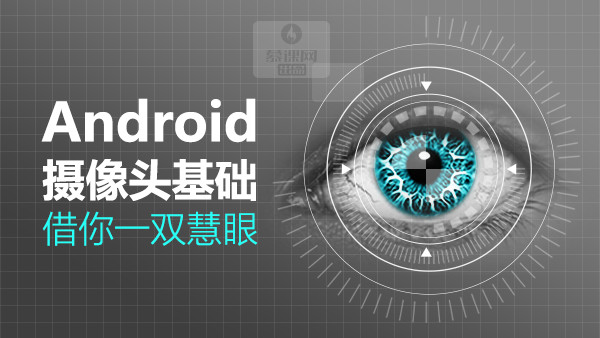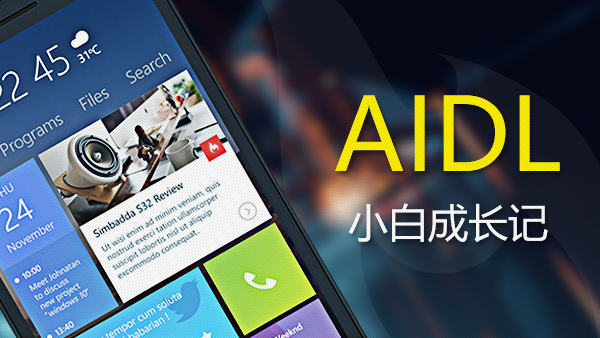引子
如果列表中每个移出屏幕的表项都直接销毁,移入时重新创建,很不经济。所以RecyclerView引入了缓存机制。
回收是为了复用,复用的好处是有可能免去两个昂贵的操作:1. 为表项视图绑定数据 2. 创建表项视图
下面几个问题对于理解“回收复用机制”很关键:
what:回收什么?复用什么?
where:回收到哪里去?从哪里获得复用?
when:什么时候回收?什么时候复用?
这一篇试着从已知的知识出发在源码中寻觅未知的“RecyclerView复用机制”。
(ps: 下文中的 粗斜体字 表示引导源码阅读的内心戏)
寻觅
触发复用的众多时机中必然包含下面这种:“当移出屏幕的表项重新回到界面”。表项本质上是一个View,屏幕上的表项必然需要依附于一棵View树,即必然有一个父容器调用了addView()。而 RecyclerView继承自 ViewGroup,遂以RecyclerView.addView()为切入点向上搜寻复用的代码。
在RecyclerView.java中全局搜索“addView”,发现RecyclerView()并没有对addView()函数重载,但找到一处addView()的调用:
//RecyclerView是ViewGroup的子类public class RecyclerView extends ViewGroup implements ScrollingView, NestedScrollingChild2 {
... private void initChildrenHelper() {
mChildHelper = new ChildHelper(new ChildHelper.Callback() {
... @Override
public void addView(View child, int index) { if (VERBOSE_TRACING) {
TraceCompat.beginSection("RV addView");
} //直接调用ViewGroup.addView()
RecyclerView.this.addView(child, index); if (VERBOSE_TRACING) {
TraceCompat.endSection();
}
dispatchChildAttached(child);
}
}
}
...
}以ChildHelper.Callback.addView()为起点沿着调用链继续向上搜寻,经历ChildHelper.addView()---LayoutManager.addViewInt()---LayoutManager.addView()最终到达LayoutManager.layoutChunk():
void layoutChunk(RecyclerView.Recycler recycler, RecyclerView.State state,LayoutState layoutState, LayoutChunkResult result) { //获得下一个表项
View view = layoutState.next(recycler); if (view == null) { if (DEBUG && layoutState.mScrapList == null) { throw new RuntimeException("received null view when unexpected");
} // if we are laying out views in scrap, this may return null which means there is
// no more items to layout.
result.mFinished = true; return;
}
LayoutParams params = (LayoutParams) view.getLayoutParams(); if (layoutState.mScrapList == null) { //将表项插入到列表中
if (mShouldReverseLayout == (layoutState.mLayoutDirection
== LayoutState.LAYOUT_START)) {
addView(view);
} else {
addView(view, 0);
}
} else { if (mShouldReverseLayout == (layoutState.mLayoutDirection
== LayoutState.LAYOUT_START)) {
addDisappearingView(view);
} else {
addDisappearingView(view, 0);
}
}
...
}addView(view)中传入的view是函数layoutState.next()的返回值。猜测该函数是用来获得下一个表项的。表项不止一个,应该有一个循环不断的获得下一个表项才对。沿着刚才的调用链继续往上搜寻,就会发现:的确有一个循环!
public class LinearLayoutManager extends RecyclerView.LayoutManager implements ItemTouchHelper.ViewDropHandler, RecyclerView.SmoothScroller.ScrollVectorProvider {
... int fill(RecyclerView.Recycler recycler, LayoutState layoutState,
RecyclerView.State state, boolean stopOnFocusable) {
... //recyclerview 剩余空间
int remainingSpace = layoutState.mAvailable + layoutState.mExtra;
LayoutChunkResult layoutChunkResult = mLayoutChunkResult; //不断填充,直到空间消耗完毕
while ((layoutState.mInfinite || remainingSpace > 0) && layoutState.hasMore(state)) {
layoutChunkResult.resetInternal(); if (VERBOSE_TRACING) {
TraceCompat.beginSection("LLM LayoutChunk");
} //填充一个表项
layoutChunk(recycler, state, layoutState, layoutChunkResult);
...
}
...
}
}而fill()是在onLayoutChildren()中被调用:
/**
* Lay out all relevant child views from the given adapter.
* 布局所有给定adapter中相关孩子视图
* 注释太长了,省略了不相关信息
* @param recycler Recycler to use for fetching potentially cached views for a
* position
* @param state Transient state of RecyclerView
*/
public void onLayoutChildren(Recycler recycler, State state) {
Log.e(TAG, "You must override onLayoutChildren(Recycler recycler, State state) ");
}看完注释,感觉前面猜测应该是正确的。onLayoutChildren()是用来布局RecyclerView中所有的表项的。回头去看一下layoutState.next(),表项复用逻辑应该就在其中。
/**
* Helper class that keeps temporary state while {LayoutManager} is filling out the empty
* space.
*/
static class LayoutState {
/**
* Gets the view for the next element that we should layout.
* 获得下一个元素的视图用于布局
* Also updates current item index to the next item, based on {@link #mItemDirection}
*
* @return The next element that we should layout.
*/
View next(RecyclerView.Recycler recycler) { if (mScrapList != null) { return nextViewFromScrapList();
} //调用了Recycler.getViewForPosition()
final View view = recycler.getViewForPosition(mCurrentPosition);
mCurrentPosition += mItemDirection; return view;
}
}最终调用了Recycler.getViewForPosition(),Recycler是回收器的意思,感觉离想要找的“复用”逻辑越来越近了。Recycler到底是做什么用的?:
/**
* A Recycler is responsible for managing scrapped or detached item views for reuse.
* Recycler负责管理scrapped和detached表项的复用
* <p>A "scrapped" view is a view that is still attached to its parent RecyclerView but
* that has been marked for removal or reuse.</p>
*/
public final class Recycler {
...
}终于找到你~~ ,Recycler用于表项的复用!沿着Recycler.getViewForPosition()的调用链继续向下搜寻,找到了一个关键函数(函数太长了,为了防止头晕,只列出了关键节点):
/**
* Attempts to get the ViewHolder for the given position, either from the Recycler scrap,
* cache, the RecycledViewPool, or creating it directly.
* 尝试获得指定位置的ViewHolder,要么从scrap,cache,RecycledViewPool中获取,要么直接重新创建
* @return ViewHolder for requested position
*/
@Nullable
ViewHolder tryGetViewHolderForPositionByDeadline(int position, boolean dryRun, long deadlineNs) {
... boolean fromScrapOrHiddenOrCache = false;
ViewHolder holder = null; //0 从changed scrap集合中获取ViewHolder
if (mState.isPreLayout()) {
holder = getChangedScrapViewForPosition(position);
fromScrapOrHiddenOrCache = holder != null;
} //1. 通过position从attach scrap或一级回收缓存中获取ViewHolder
if (holder == null) {
holder = getScrapOrHiddenOrCachedHolderForPosition(position, dryRun);
...
}
if (holder == null) {
... final int type = mAdapter.getItemViewType(offsetPosition); //2. 通过id在attach scrap集合和一级回收缓存中查找viewHolder
if (mAdapter.hasStableIds()) {
holder = getScrapOrCachedViewForId(mAdapter.getItemId(offsetPosition),
type, dryRun);
...
} //3. 从自定义缓存中获取ViewHolder
if (holder == null && mViewCacheExtension != null) { // We are NOT sending the offsetPosition because LayoutManager does not
// know it.
final View view = mViewCacheExtension
.getViewForPositionAndType(this, position, type);
...
} //4.从缓存池中拿ViewHolder
if (holder == null) { // fallback to pool
...
holder = getRecycledViewPool().getRecycledView(type);
...
} //所有缓存都没有命中,只能创建ViewHolder
if (holder == null) {
...
holder = mAdapter.createViewHolder(RecyclerView.this, type);
...
}
} boolean bound = false; if (mState.isPreLayout() && holder.isBound()) { // do not update unless we absolutely have to.
holder.mPreLayoutPosition = position;
} //只有invalid的viewHolder才能绑定视图数据
else if (!holder.isBound() || holder.needsUpdate() || holder.isInvalid()) { if (DEBUG && holder.isRemoved()) { throw new IllegalStateException("Removed holder should be bound and it should"
+ " come here only in pre-layout. Holder: " + holder
+ exceptionLabel());
} final int offsetPosition = mAdapterHelper.findPositionOffset(position); //获得ViewHolder后,绑定视图数据
bound = tryBindViewHolderByDeadline(holder, offsetPosition, position, deadlineNs);
}
... return holder;
}函数的名字以“tryGet”开头,“尝试获得”表示可能获得失败,再结合注释中说的:“尝试获得指定位置的ViewHolder,要么从scrap,cache,RecycledViewPool中,要么直接重新创建。”猜测scrap,cache,RecycledViewPool是回收表项的容器,相当于表项缓存,如果缓存未命中则只能重新创建。
函数的返回值是
ViewHolder,难道回收和复用的是ViewHolder? 函数开头声明了局部变量ViewHolder holder = null;最终返回的也是这个局部变量,并且有4处holder == null的判断,这样的代码结构是不是有点像缓存?每次判空意味着上一级缓存未命中并继续尝试新的获取方法?缓存是不是有不止一种存储形式? 让我们一次一次地看:
第一次尝试
ViewHolder tryGetViewHolderForPositionByDeadline(int position, boolean dryRun, long deadlineNs) {
... if (mState.isPreLayout()) {
holder = getChangedScrapViewForPosition(position);
fromScrapOrHiddenOrCache = holder != null;
}
...
}只有在mState.isPreLayout()为true时才会做这次尝试,这应该是一种特殊情况,先忽略。
第二次尝试
ViewHolder tryGetViewHolderForPositionByDeadline(int position, boolean dryRun, long deadlineNs) {
... if (holder == null) {
holder = getScrapOrHiddenOrCachedHolderForPosition(position, dryRun); //下面一段代码蕴含着一个线索,买个伏笔,先把他略去
...
}
...
}当第一次尝试失败后,尝试通过
getScrapOrHiddenOrCachedHolderForPosition()获得ViewHolder。这里故意省略了一段代码,先埋个伏笔,待会分析。先沿着获取
ViewHolder的调用链继续往下:
//省略非关键代码
/**
* Returns a view for the position either from attach scrap, hidden children, or cache.
* 从attach scrap,hidden children或者cache中获得指定位置上的一个ViewHolder
*/
ViewHolder getScrapOrHiddenOrCachedHolderForPosition(int position, boolean dryRun) { final int scrapCount = mAttachedScrap.size(); // Try first for an exact, non-invalid match from scrap.
//1.在attached scrap中搜索ViewHolder
for (int i = 0; i < scrapCount; i++) { final ViewHolder holder = mAttachedScrap.get(i); if (!holder.wasReturnedFromScrap() && holder.getLayoutPosition() == position
&& !holder.isInvalid() && (mState.mInPreLayout || !holder.isRemoved())) {
holder.addFlags(ViewHolder.FLAG_RETURNED_FROM_SCRAP); return holder;
}
} //2.从移除屏幕的视图中搜索ViewHolder,找到了之后将他存入scrap回收集合中
if (!dryRun) {
View view = mChildHelper.findHiddenNonRemovedView(position); if (view != null) { final ViewHolder vh = getChildViewHolderInt(view);
mChildHelper.unhide(view); int layoutIndex = mChildHelper.indexOfChild(view);
...
mChildHelper.detachViewFromParent(layoutIndex);
scrapView(view);
vh.addFlags(ViewHolder.FLAG_RETURNED_FROM_SCRAP
| ViewHolder.FLAG_BOUNCED_FROM_HIDDEN_LIST); return vh;
}
} // Search in our first-level recycled view cache.
//3.在缓存中搜索ViewHolder
final int cacheSize = mCachedViews.size(); for (int i = 0; i < cacheSize; i++) { final ViewHolder holder = mCachedViews.get(i); if (!holder.isInvalid() && holder.getLayoutPosition() == position) {
... return holder;
}
} return null;
}依次从三个地方搜索ViewHolder:1. mAttachedScrap 2. 隐藏表项 3. mCachedViews,找到立即返回。
其中mAttachedScrap和mCachedViews作为Recycler的成员变量,用来存储一组ViewHolder:
public final class Recycler { final ArrayList<ViewHolder> mAttachedScrap = new ArrayList<>();
... final ArrayList<ViewHolder> mCachedViews = new ArrayList<ViewHolder>();
...
RecycledViewPool mRecyclerPool;
}看到这里应该可以初步得出结论:RecyclerView回收机制中,回收复用的对象是
ViewHolder,且以ArrayList为结构存储在Recycler对象中。RecycledViewPool mRecyclerPool;看着也像是回收容器,那待会是不是也会到这里拿ViewHolder?回到刚才埋下的伏笔,把第二次尝试获取
ViewHolder的代码补全:
ViewHolder tryGetViewHolderForPositionByDeadline(int position, boolean dryRun, long deadlineNs) {
... if (holder == null) {
holder = getScrapOrHiddenOrCachedHolderForPosition(position, dryRun); //下面一段代码蕴含这一个线索,买个伏笔,先把他略去
if (holder != null) { //检验ViewHolder有效性
if (!validateViewHolderForOffsetPosition(holder)) { // recycle holder (and unscrap if relevant) since it can't be used
if (!dryRun) { // we would like to recycle this but need to make sure it is not used by
// animation logic etc.
holder.addFlags(ViewHolder.FLAG_INVALID); if (holder.isScrap()) {
removeDetachedView(holder.itemView, false);
holder.unScrap();
} else if (holder.wasReturnedFromScrap()) {
holder.clearReturnedFromScrapFlag();
} //若不满足有效性检验,则回收ViewHolder
recycleViewHolderInternal(holder);
}
holder = null;
} else {
fromScrapOrHiddenOrCache = true;
}
}
}
...
}如果成功获得ViewHolder则检验其有效性,若检验失败则将其回收。好不容易获取了ViewHoler对象,一言不合就把他回收?难道对所有复用的 ViewHolder 都有这么严格的检验吗?暂时无法回答这些疑问,还是先把复用逻辑看完吧:
第三次尝试
ViewHolder tryGetViewHolderForPositionByDeadline(int position, boolean dryRun, long deadlineNs) {
... //只有当Adapter设置了id,才会进行这次查找
if (mAdapter.hasStableIds()) {
holder = getScrapOrCachedViewForId(mAdapter.getItemId(offsetPosition),type, dryRun); if (holder != null) { // update position
holder.mPosition = offsetPosition;
fromScrapOrHiddenOrCache = true;
}
}
...
}这一次尝试调用的函数名(“byId”)和上一次(“byPosition”)只是后缀不一样。上一次是通过表项位置,这一次是通过表项id。内部实现也几乎一样,判断的依据从表项位置变成表项id。为表项设置id属于特殊情况,先忽略。
第四次尝试
ViewHolder tryGetViewHolderForPositionByDeadline(int position, boolean dryRun, long deadlineNs) {
... if (holder == null && mViewCacheExtension != null) { // We are NOT sending the offsetPosition because LayoutManager does not
// know it.
final View view = mViewCacheExtension.getViewForPositionAndType(this, position, type); if (view != null) { //获得view对应的ViewHolder
holder = getChildViewHolder(view); if (holder == null) { throw new IllegalArgumentException("getViewForPositionAndType returned"
+ " a view which does not have a ViewHolder"
+ exceptionLabel());
} else if (holder.shouldIgnore()) { throw new IllegalArgumentException("getViewForPositionAndType returned"
+ " a view that is ignored. You must call stopIgnoring before"
+ " returning this view." + exceptionLabel());
}
}
}
...
}经过从mAttachedScrap和mCachedViews获取ViewHolder未果后,继续尝试通过ViewCacheExtension获取:
/**
* ViewCacheExtension is a helper class to provide an additional layer of view caching that can
* be controlled by the developer.
* ViewCacheExtension提供了额外的表项缓存层,用户帮助开发者自己控制表项缓存
* <p>
* When {@link Recycler#getViewForPosition(int)} is called, Recycler checks attached scrap and
* first level cache to find a matching View. If it cannot find a suitable View, Recycler will
* call the {@link #getViewForPositionAndType(Recycler, int, int)} before checking
* {@link RecycledViewPool}.
* 当Recycler从attached scrap和first level cache中未能找到匹配的表项时,它会在去RecycledViewPool中查找之前,先尝试从自定义缓存中查找
* <p>
*/
public abstract static class ViewCacheExtension { /**
* Returns a View that can be binded to the given Adapter position.
* <p>
* This method should <b>not</b> create a new View. Instead, it is expected to return
* an already created View that can be re-used for the given type and position.
* If the View is marked as ignored, it should first call
* {@link LayoutManager#stopIgnoringView(View)} before returning the View.
* <p>
* RecyclerView will re-bind the returned View to the position if necessary.
*/
public abstract View getViewForPositionAndType(Recycler recycler, int position, int type);
}注释揭露了很多信息:ViewCacheExtension用于开发者自定义表项缓存,且这层缓存的访问顺序位于mAttachedScrap和mCachedViews之后,RecycledViewPool之前。这和Recycler. tryGetViewHolderForPositionByDeadline()中的代码逻辑一致,那接下来的第五次尝试,应该是从 RecycledViewPool 中获取 ViewHolder
第五次尝试
ViewHolder tryGetViewHolderForPositionByDeadline(int position, boolean dryRun, long deadlineNs) {
... if (holder == null) {
... //从回收池中获取ViewHolder对象
holder = getRecycledViewPool().getRecycledView(type); if (holder != null) {
holder.resetInternal(); if (FORCE_INVALIDATE_DISPLAY_LIST) {
invalidateDisplayListInt(holder);
}
}
}
...
}前四次尝试都未果,最后从RecycledViewPool中获取ViewHolder。稍等片刻!相对于从mAttachedScrap 和 mCachedViews 中获取 ViewHolder,此处并没有严格的检验逻辑。为啥要区别对待不同的缓存?大大的问号悬在头顶,但现在暂时无法解答,还是接着看RecycledViewPool的结构吧~
public final class Recycler {
...
RecycledViewPool mRecyclerPool; //获得RecycledViewPool实例
RecycledViewPool getRecycledViewPool() { if (mRecyclerPool == null) {
mRecyclerPool = new RecycledViewPool();
} return mRecyclerPool;
}
...
}public static class RecycledViewPool {
... //从回收池中获取ViewHolder对象
public ViewHolder getRecycledView(int viewType) { final ScrapData scrapData = mScrap.get(viewType); if (scrapData != null && !scrapData.mScrapHeap.isEmpty()) { final ArrayList<ViewHolder> scrapHeap = scrapData.mScrapHeap; return scrapHeap.remove(scrapHeap.size() - 1);
} return null;
}
...
}函数中只要访问了类成员变量,它的复杂度就提高了,因为类成员变量的作用于超出了函数体,使得函数就和类中其他函数耦合,所以不得不进行阅读更多以帮助理解该函数:
public static class RecycledViewPool { //同类ViewHolder缓存个数上限
private static final int DEFAULT_MAX_SCRAP = 5; /**
* Tracks both pooled holders, as well as create/bind timing metadata for the given type.
* 回收池中存放单个类型ViewHolder的容器
*/
static class ScrapData { //同类ViewHolder存储在ArrayList中
ArrayList<ViewHolder> mScrapHeap = new ArrayList<>(); //每种类型的ViewHolder最多存5个
int mMaxScrap = DEFAULT_MAX_SCRAP;
} //回收池中存放所有类型ViewHolder的容器
SparseArray<ScrapData> mScrap = new SparseArray<>();
... //ViewHolder入池 按viewType分类入池,一个类型的ViewType存放在一个ScrapData中
public void putRecycledView(ViewHolder scrap) { final int viewType = scrap.getItemViewType(); final ArrayList<ViewHolder> scrapHeap = getScrapDataForType(viewType).mScrapHeap; //如果超限了,则放弃入池
if (mScrap.get(viewType).mMaxScrap <= scrapHeap.size()) { return;
} if (DEBUG && scrapHeap.contains(scrap)) { throw new IllegalArgumentException("this scrap item already exists");
}
scrap.resetInternal(); //回收时,ViewHolder从列表尾部插入
scrapHeap.add(scrap);
} //从回收池中获取ViewHolder对象
public ViewHolder getRecycledView(int viewType) { final ScrapData scrapData = mScrap.get(viewType); if (scrapData != null && !scrapData.mScrapHeap.isEmpty()) { final ArrayList<ViewHolder> scrapHeap = scrapData.mScrapHeap; //复用时,从列表尾部获取ViewHolder(优先复用刚入池的ViewHoler)
return scrapHeap.remove(scrapHeap.size() - 1);
} return null;
}
}上述代码列出了
RecycledViewPool中最关键的一个成员变量和两个函数。至此可以得出结论:RecycledViewPool中的ViewHolder存储在SparseArray中,并且按viewType分类存储(即是Adapter.getItemViewType()的返回值),同一类型的ViewHolder存放在ArrayList中,且默认最多存储5个。
创建ViewHolder并绑定数据
ViewHolder tryGetViewHolderForPositionByDeadline(int position,boolean dryRun, long deadlineNs) {
... //所有缓存都没有命中,只能创建ViewHolder
if (holder == null) {
...
holder = mAdapter.createViewHolder(RecyclerView.this, type);
...
}
... boolean bound = false; if (mState.isPreLayout() && holder.isBound()) { // do not update unless we absolutely have to.
holder.mPreLayoutPosition = position;
} //如果表项没有绑定过数据 或 表项需要更新 或 表项无效 且表项没有被移除时绑定表项数据
else if (!holder.isBound() || holder.needsUpdate() || holder.isInvalid()) { if (DEBUG && holder.isRemoved()) { throw new IllegalStateException("Removed holder should be bound and it should"
+ " come here only in pre-layout. Holder: " + holder
+ exceptionLabel());
} final int offsetPosition = mAdapterHelper.findPositionOffset(position); //为表项绑定数据
bound = tryBindViewHolderByDeadline(holder, offsetPosition, position, deadlineNs);
}
}再进行了上述所有尝试后,如果依然没有获得
ViewHolder,只能重新创建并绑定数据。沿着调用链往下,就会找到熟悉的onCreateViewHolder()和onBindViewHolder()。绑定数据的逻辑嵌套在一个大大的if中(原来并不是每次都要绑定数据,只有满足特定条件时才需要绑定。)
那什么情况下需要绑定,什么情况下不需要呢?这就要引出“缓存优先级”这个概念。
缓存优先级
缓存有优先级一说,在使用图片二级缓存(内存+磁盘)时,会先尝试去优先级高的内存中获取,若未命中再去磁盘中获取。优先级越高意味着性能越好。
RecyclerView的缓存机制中是否也能套用“缓存优先级”这一逻辑?虽然为了获取
ViewHolder做了5次尝试(共从6个地方获取),先排除3种特殊情况,即从mChangedScrap获取、通过id获取、从自定义缓存获取,正常流程中只剩下3种获取方式,优先级从高到低依次是:
从
mAttachedScrap获取从
mCachedViews获取从
mRecyclerPool获取
这样的缓存优先级是不是意味着,对应的复用性能也是从高到低?(复用性能越好意味着所做的昂贵操作越少)
毫无疑问,所有缓存都未命中的情况下会发生最坏情况。剩下的两种情况应该由3种获取方式来分摊,猜测优先级最低的 mRecyclerPool 方式应该命中次好情况,而优先级最高的 mAttachedScrap应该命中最好情况,去源码中验证一下:
最坏情况:重新创建
ViewHodler并重新绑定数据次好情况:复用
ViewHolder但重新绑定数据最好情况:复用
ViewHolder且不重新绑定数据
ViewHolder getScrapOrHiddenOrCachedHolderForPosition(int position, boolean dryRun) { final int scrapCount = mAttachedScrap.size(); // Try first for an exact, non-invalid match from scrap.
//1.从attached scrap回收集合中
for (int i = 0; i < scrapCount; i++) { final ViewHolder holder = mAttachedScrap.get(i); //只有当holder是有效时才返回
if (!holder.wasReturnedFromScrap() && holder.getLayoutPosition() == position
&& !holder.isInvalid() && (mState.mInPreLayout || !holder.isRemoved())) {
holder.addFlags(ViewHolder.FLAG_RETURNED_FROM_SCRAP); return holder;
}
}
}ViewHolder tryGetViewHolderForPositionByDeadline(int position, boolean dryRun, long deadlineNs) {
... if (holder == null) {
... //从回收池中获取ViewHolder对象
holder = getRecycledViewPool().getRecycledView(type); if (holder != null) { //重置ViewHolder
holder.resetInternal(); if (FORCE_INVALIDATE_DISPLAY_LIST) {
invalidateDisplayListInt(holder);
}
}
}
... //如果表项没有绑定过数据 或 表项需要更新 或 表项无效 且表项没有被移除时绑定表项数据
else if (!holder.isBound() || holder.needsUpdate() || holder.isInvalid()) { if (DEBUG && holder.isRemoved()) { throw new IllegalStateException("Removed holder should be bound and it should"
+ " come here only in pre-layout. Holder: " + holder
+ exceptionLabel());
} final int offsetPosition = mAdapterHelper.findPositionOffset(position); //为表项绑定数据
bound = tryBindViewHolderByDeadline(holder, offsetPosition, position, deadlineNs);
}
...
}public abstract static class ViewHolder { /**
* This ViewHolder has been bound to a position; mPosition, mItemId and mItemViewType
* are all valid.
* 绑定标志位
*/
static final int FLAG_BOUND = 1 << 0; /**
* This ViewHolder's data is invalid. The identity implied by mPosition and mItemId
* are not to be trusted and may no longer match the item view type.
* This ViewHolder must be fully rebound to different data.
* 无效标志位
*/
static final int FLAG_INVALID = 1 << 2; //判断ViewHolder是否无效
boolean isInvalid() { //将当前ViewHolder对象的flag和无效标志位做位与操作
return (mFlags & FLAG_INVALID) != 0;
} //判断ViewHolder是否被绑定
boolean isBound() { //将当前ViewHolder对象的flag和绑定标志位做位与操作
return (mFlags & FLAG_BOUND) != 0;
} /**
* 将ViewHolder重置
*/
void resetInternal() { //将ViewHolder的flag置0
mFlags = 0;
mPosition = NO_POSITION;
mOldPosition = NO_POSITION;
mItemId = NO_ID;
mPreLayoutPosition = NO_POSITION;
mIsRecyclableCount = 0;
mShadowedHolder = null;
mShadowingHolder = null;
clearPayload();
mWasImportantForAccessibilityBeforeHidden = ViewCompat.IMPORTANT_FOR_ACCESSIBILITY_AUTO;
mPendingAccessibilityState = PENDING_ACCESSIBILITY_STATE_NOT_SET;
clearNestedRecyclerViewIfNotNested(this);
}
}温故知新,回看 mRecyclerPool复用逻辑时,发现在成功获得ViewHolder对象后,立即对其重置(将flag置0)。这样就满足了绑定数据的判断条件(因为0和非0位与之后必然为0)。
同样的,在才mAttachedScrap中获取ViewHolder时,只有当其是有效的才会返回。所以猜测成立:从mRecyclerPool中复用的ViewHolder需要重新绑定数据,从mAttachedScrap中复用的ViewHolder不要重新出创建也不需要重新绑定数据。
总结
在
RecyclerView中,并不是每次绘制表项,都会重新创建ViewHolder对象,也不是每次都会重新绑定ViewHolder数据。RecyclerView通过Recycler获得下一个待绘制表项。Recycler有4个层次用于缓存ViewHolder对象,优先级从高到底依次为ArrayList<ViewHolder> mAttachedScrap、ArrayList<ViewHolder> mCachedViews、ViewCacheExtension mViewCacheExtension、RecycledViewPool mRecyclerPool。如果四层缓存都未命中,则重新创建并绑定ViewHolder对象RecycledViewPool对ViewHolder按viewType分类存储(通过SparseArray),同类ViewHolder存储在默认大小为5的ArrayList中从
mRecyclerPool中复用的ViewHolder需要重新绑定数据,从mAttachedScrap中复用的ViewHolder不要重新出创建也不需要重新绑定数据。
这篇文章粗略的回答了关于“复用”的4个问题,即“复用什么?”、“从哪里获得复用?”,“什么时候复用?”,“复用优先级”读到这里,可能会有很多疑问:
scrap view是什么?changed scrap view和attached scrap view有什么区别?复用的
ViewHolder是在什么时候被缓存的?为什么要4层缓存?它们的用途有什么区别?
作者:唐子玄
链接:https://www.jianshu.com/p/5c2905cfb6de

 随时随地看视频
随时随地看视频




